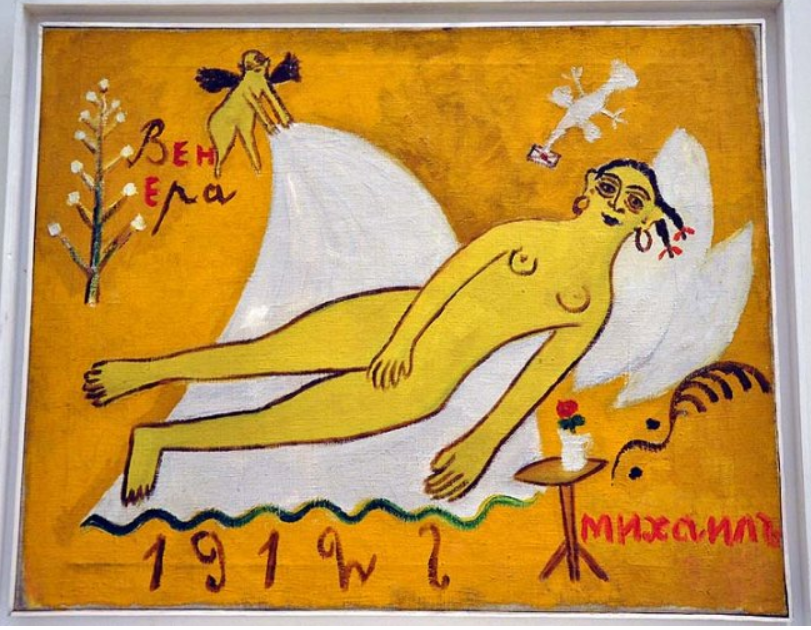log in
Enter site
Login to use Arthive functionality to the maximum
Venus and Michael
Mikhail Larionov • Painting, 1912, 68×85.5 cm
Description of the artwork «Venus and Michael»
"Venus" Larionov symbolize the transitional stage of the artist from neo-primitivism to abstractionism. In this picture, Venus is quite physically depicted, but the image does not carry the sensation of physicality and sensuality. She already goes into the category of abstractions. In fact, this is the Venus scheme, written with a soft smile and thin irony peculiar to Larionov: here, they say, look, everything is real, even the chest is there, and it is traced carefully as. Venus's hair does not “fall down” anywhere and “envelop” nothing, they are braided in pigtails and stick out in different directions.
Perina, on which Venus reclines, holds the angel. His image is very different from the classic plump cupids (by the way, isn’t Mikhail Larionov himself depicted in such an angel-like appearance?). And Venus is far from the Greco-Roman ideals, frankly. The inscriptions on the picture bring it closer to the signage genre.
Mikhail Larionov wrote a whole series of "Venus". "Katsapskaya Venus" , "Jewish Venus", there is still a tabloid, Turkish, Spanish, Negro ... There is a version that the cycle of "Venus" was the answer to critics calling Larionov to return to the fold of classical art. It is known that especially in this zealous Alexander Benois, who was sure that Larionov "could have turned out to be an artist" with the proper behavior. Benoit even wrote: “After all, he could create in the spirit of some kind of“ primitivism ”complete and perfect works in the“ old spirit ”".
The scandalous definitions of “Venus” are by no means an accident, but the answer to aesthetic “peace artists” in general, and Benoit in particular. This cycle clearly outlined the position of Larionov: he did not heed the admonitions, moreover, we already know that the next stage of his work - that’s literally “Venus” - was "Radiant paintings".
Author: Alain Esaulova
Perina, on which Venus reclines, holds the angel. His image is very different from the classic plump cupids (by the way, isn’t Mikhail Larionov himself depicted in such an angel-like appearance?). And Venus is far from the Greco-Roman ideals, frankly. The inscriptions on the picture bring it closer to the signage genre.
Mikhail Larionov wrote a whole series of "Venus". "Katsapskaya Venus" , "Jewish Venus", there is still a tabloid, Turkish, Spanish, Negro ... There is a version that the cycle of "Venus" was the answer to critics calling Larionov to return to the fold of classical art. It is known that especially in this zealous Alexander Benois, who was sure that Larionov "could have turned out to be an artist" with the proper behavior. Benoit even wrote: “After all, he could create in the spirit of some kind of“ primitivism ”complete and perfect works in the“ old spirit ”".
The scandalous definitions of “Venus” are by no means an accident, but the answer to aesthetic “peace artists” in general, and Benoit in particular. This cycle clearly outlined the position of Larionov: he did not heed the admonitions, moreover, we already know that the next stage of his work - that’s literally “Venus” - was "Radiant paintings".
Author: Alain Esaulova



